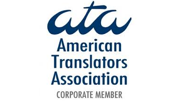July 30, 2014 by totalityservices
Get a Free Quote
Our Accreditations





Recent Updates
Buckets and spoons: an etymological tour of death metaphors
The need to translate English into English is more common than you might imagine, where phrases of English are deployed in a foreign language and have taken on an alternative meaning that isn’t appropriate in actual English text. Read More
As the tenth most widely-spoken language in the world, Punjabi – the official language of the Indian state of Punjab – is used primarily in India and Pakistan.
In the former country, the most recent census shows around 30 million people use this tongue, while there are 70 million speakers in the latter, even though Urdu is recognised as having ‘official’ status as the primary form of communication.
With large sections of the Canadian and British population also speaking Punjabi, chances are you have encountered – or will come across – this language at some point in your life.
So, what do you already know about it? Here are some of the lesser-known facts that non-speakers might not be aware of.
It’s not actually called Punjabi
Punjabi is, in fact, the UK spelling of the word, even though it is academically presented as ‘Panjabi’. The English adaptation has ended up becoming the more commonly-used term, however, which perhaps highlights the influence that western culture has had on this part of the world.
The origins of Punjabi stem from the fact that native speakers were historically based around the Panjab, also known as ‘the land of five rivers’. Because this region was eventually divided between India and Pakistan when the latter partitioned, this is why residents of both countries speak the language.
It could be said that Punjabi sits in-between the two official languages of India and Pakistan, with the former primarily recognising Hindi as its main tongue. Meanwhile, Pakistan formally uses Urdu because it is the language of Islam, of which the majority of the population follow.
It is written using two different alphabets
Punjabi can be presented in either the Gurmukhi script, which is generally adopted in India, or the Shahmukhi script, which is favoured in Pakistan. It is one of the few languages in the world that is written in two different alphabets like this.
Gurmukhi is written in left to right horizontal lines and takes the form of a syllabic alphabet, while the script itself has a number of notable features. For example, all consonants have an inherent vowel, which can be changed through the use of diacritics that appear below, above, after or before the consonant.
Similarly, special conjunct symbols are implemented when certain consonants are combined, which join the essential parts of every letter.
Shahmukhi, on the other hand, is written in Perso-Arabic alphabet, going in the opposite direction to Gurmukhi – from right to left. This alternate written variety of Punjabi has only been used since the latter half of the 20th century and literally translates into “from the King’s mouth”.
It is a tonal language
Punjabi is one of only a few tonal languages in the Indo-Aryan region, which means the way a word is said can dramatically alter its meaning.
These melodic features are very much unlike the same way one might use tone in the English language, where the words have the same meaning and the way it is said is used to express context. Instead, the identity of the message itself can be completely transformed depending on how the speaker delivers it.
There are three different tones used within Punjabi – a high-falling tone, a mid tone and a deep-rising tone.
An example of how this can impact on the definition of what is being said is the word ‘korara’, which mean ‘whip’ when spoken in a level tone, ‘horse’ when spoken in a deep tone and ‘leper’ in a high falling tone. This shows just how important understanding the role of how the language is delivered is – as without this knowledge, misunderstandings can be all too easy!
Written by Helen Fream
Get a Free Quote
© 2024 All Rights Reserved
Rosetta Translation, 133 Whitechapel High St, London E1 7QA · 0207 248 2905
Comments
Add Comment